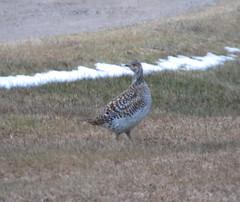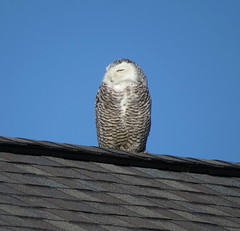Oxbow and Lost Bridge
With the prospect of a total washout this Labor day weekend from the remnants of Hurricane Issac, I gathered my gear and stashed it in my truck before heading off to work today. This way I have a bit of a head start on my trip over to the Oxbow. I was hoping with this low pressure system pushing North that some of the migrants will stick around and I could catch them at the Oxbow. Despite this sound reasoning the shore birds at both locations were pretty lack luster.
Except for 2 lone fishermen the Oxbow was practically empty. Birds were distant and getting close only spooked them off so trying to get any kind of picture was impossible. I’ve come to the conclusion that I know what I’m capable of when it comes to digiscoping, and I’m not going to put just any picture on the blog if it’s not acceptable by my standards.
Oxbow Lake and Jackpot Pond were the 2 bodies of water I was most interested in today. Jockeying to get the bird-mobile close enough to where the birds were congregated can be difficult at the Oxbow, and with only a few pull-offs it means for the birder hiking in to get closer to the choice birds. Being tired from a full day work and with my knee bothering me a little I opted to keep the longer walks to a minimum.
The fact that you can drive through the Oxbow is what makes it attractive for me. Drive a little, pull over if you see something good, then jump back in to drive to the next location. And when you exit from the Oxbow you’re right next to one of those Indiana casinos and a nice overlook to Jackpot Pond.
The birds seen were pretty normal with a few exceptions. I witnessed a huge flock of Red-winged Blackbirds fly over. A rough estimate would be in the thousands. I saw a nice fly over of a immature Bald Eagle, which are always nice to see. And a surprise were 2 Black-crowned Night Herons pretty close to the road. So I backed up the truck to be out of their eye sight, went behind the truck to retrieve my scope to get a picture, to be left standing there watching them fly away. BUMMER
Leaving the Oxbow I made my way back into Ohio to Lost Bridge. It was here that I ran into 3 birders I knew who were on their way back from Goose Pond and stopped for a quick go over before heading home. Lost Bridge was pretty much a flop. I was able to spy some Peeps in the distance but not much of anything else.
The day was wearing on, and I was worn out, so it was time to quit and head for the barn.
Notable birds for the day include:
- Least Sandpiper
- Killdeer
- Pectoral Sandpiper
- Lesser Yellowleg
- Great Blue Heron
- Great Egret
- Green Heron
- Black-crowned Night Heron
- Belted Kingfisher
- Red-tailed Hawk
- Red-shouldered Hawk
- Bald Eagle
- Mourning Dove
- Red-winged Blackbird
- American Goldfinch
- Song Sparrow
- American Crow
- Turkey Vulture
- Black Vulture
- Mallard
- Wood Duck
- Canada Goose
- Double-crested Cormorant
- Tree Swallow
- Northern Rough-winged Swallow
- Downy Woodpecker
- Northern Cardinal
- American Robin















